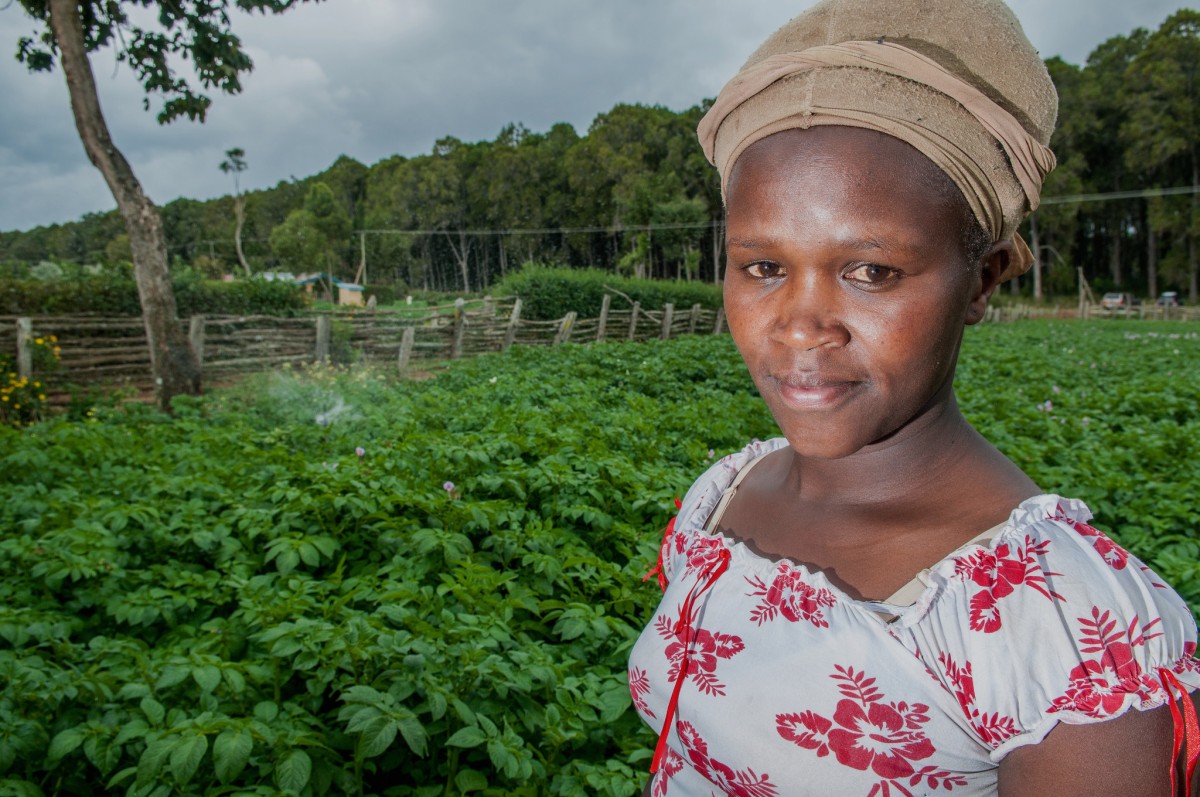Meeting the Sustainable Development Goals on hunger and poverty will require a 50 percent increase in food production in the next 15 years. In fact, a global food revolution is urgently needed, argues a recent paper by a number of leading scientists working with the CGIAR Research Program on Water, Land and Ecosystems (WLE).
Without radically changing the way we produce and consume food, we are unlikely to attain the twin objectives of feeding humanity and living within biophysical planetary boundaries that define the limits within which we can sustainably use the earth’s resources.

Agriculture version 2.0
“While scientists and the development community have made efforts to minimize environmental impacts from agricultural practices, the reality is that the results have been and are only marginal,” says Johan Rockström, chair of the WLE Steering Committee and lead author of the paper. “There is an urgent need to transform agriculture from being one of the planet’s prime vultures to becoming one of its prime virtues.”
It is well known that agriculture is the largest contributor to environmental degradation, with approximately 40 percent of the world’s land being transformed to agriculture (crop, fiber, biofuel, and livestock production systems). Likewise, agriculture is the single largest user of freshwater in the world, with 70 percent of the total amount of withdrawn water being diverted for agriculture.
That’s why agriculture’s use and abuse of resources will have to stop. Instead, it is time to launch a new kind of farming. The authors outline six key areas for change:
- Climate change: We must transform agriculture from the world’s single largest source of greenhouse gases into a major sink by changing the way we farm land
- Land use: We need to maintain current forest land and begin to move away from extensive land use practices
- Water use: We need to improve water productivity in agriculture by 50 percent by 2030 and to limit to runoff withdrawals in rivers
- Biodiversity loss: We must adapt watershed and catchment practices to build resilience ensure a zero percent loss of biodiversity
- Loss of nutrients: We need to drastically reduce the excessive use of N and P and instead begin to recycle nutrient flows
- Pollution: We need to minimize the adverse impacts of chemicals and other negative practices from agriculture
Sustainable intensification with a twist
Sustainable intensification has long been lauded as the solution to today’s challenges, that is, as a way to enhance agricultural productivity while reducing its environmental impacts. However, the authors argue this current definition does not go far enough.
They suggest the following definition:
“Adopting practices along the entire value chain of the global food system that meet rising needs for nutritious and healthy food through practices that build social–ecological resilience and enhance natural capital within the safe operating space of the Earth system.”
But how can such a comprehensive change be realized? The authors argue that a radical change in thinking is needed.
Sustainability first
The authors suggest that agriculture needs to move toward a primary objective of sustainability, prioritized over a focus on yield and production.
In some areas, increases in yield will be compatible with environmental improvements. In other areas, yield reductions or land reallocation will be needed to ensure sustainability and benefits such as biodiversity conservation, carbon storage, flood protection and recreation. In other words, there will be trade-offs between uses and users, and we will need to manage who wins and who loses.
Ultimately, sustainable intensification is about managing landscapes more strategically, and not seeing agro-ecosystems as separate from other sectors.
At the same time, sustainable intensification has to be built upon the livelihoods of the more than 500 million smallholders, who are the primary stewards of our natural resources. While the authors do not necessarily argue for large or small farms, they do highlight that small-scale farmers are more likely to sustainably manage their local resources as they are more dependent on them.
How do we get there?
Implementing the authors’ vision of sustainable intensification of agriculture will require government bodies, non-profit organizations, private sector actors and all other stakeholders to develop new approaches to managing landscapes, resources and the climate system in sustainable ways. Sustainable innovations – not only technical, but also institutional and political – are the most relevant avenue for much-needed productivity enhancements in large parts of the world.
WLE and its partners have been working, for example, on the Tana Water Fund, a mechanism that attempts to balance the water and ecosystem services needs of different actors in the Tana basin, including farmers, breweries and hydropower plants, with sustainable use of natural capital.
We, as development practitioners, researchers and scientists, also carry part of the responsibility to realize this vision for a new kind of agriculture. We must understand the political economy of sustainable intensification in different contexts and place research into policy to enable large-scale changes. Integrated, trans-disciplinary, and solutions-oriented approaches will be key to co-designing research and innovations that can support the necessary transformation. Most of all, we must dare to engage in an open dialogue on many complex perspectives and difficult questions that have yet to be answered.

